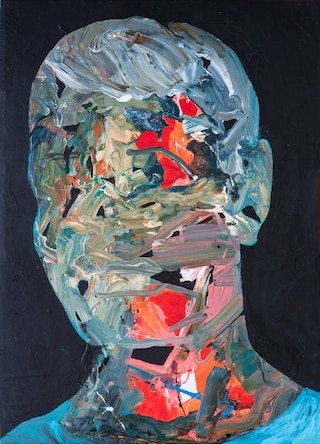If you want to see and/or buy works of Alexandrian artist Aya Tarek, you will need to navigate non-fungible tokens (NFTs). Now you are lost. So was Tarek when she admitted: “When I first heard about NFTs, I didn’t really understand what they were. Like many people today, I thought, ‘How can you sell a piece of digital art, exactly?’ I had a large collection of digital artwork that I didn’t know what to do with.”
Non-Fungible Tokens (NFT) are proof of ownership of a digital artwork. You will have to know about secure blockchain mechanisms, whereby everyone can view the work and circulate screenshots of it, but the original is owned only by the buyer.
Tarek is famous of her political street art that saw the light of day during the 2011 popular uprising that ousted Hosni Mubarak as Egypt’s president, but her career began long before that. Alexandrians were familiar with her graffiti from 2008.
She comes from a traditional fine art background, but she has gone from painting – first on canvas, then murals – to digital art, 3D-motion graphics, film and now NFTs.
Because she wanted to be free of the controls over the space where art is displayed, she became intrigued by NFTs, which have made digital art a saleable commodity, which gives exposure to artists who work exclusively with digital media, hence her first exhibition in Cairo.
In a dimly-lit space in the heart of downtown Cairo, her exhibition ‘Token’ is open to the public. The exhibition was made possible through a partnership with a new token marketplace, NFTY Arabia, which was founded in the UAE.
Curated by Marwa Benhalim, the exhibition comprises a mix of ‘physical’ paintings and digitally rendered pieces, which will become the first to be sold on NFTY Arabia.
Says Ms. Benhalim: “The exhibition deals with consumerism and capitalist trends and how they affect the way in which we interact with everything.”
One painting, T-bone depicts a mouth-watering steak, from which red paint drips off. Amid the chaos of colour and line, a human head emerges in Phantom which has an oxymoronic sinister and satisfying quality.
“NFTs fill a gap in the art market,” Benhalim said. “Many artists today don’t work with analogue media at all, so all their art is produced by digital means. The traditional set-up makes no room for this kind of work.
“It’s high time that artists in the Middle East and North Africa region were given the space to sell their work and earn the recognition they deserve.”
The platform showcases the work of 50 of the region’s top artists in February.
Token is open in Kodak Passageway, downtown Cairo until December 22.






Discussion about this post